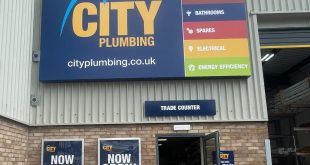In 1935, the idea of a ‘green belt’ around London, to prevent the entire south east from being paved was first mooted. In essence, it is a ring of countryside meant to control urban growth, by maintaining an area where “agriculture, forestry and outdoor leisure can be expected to prevail”. The1947 Town and Country Planning Act allowed local authoities to include such provisions in their development plans.
So far, so green and pleasant land.
We’re very wedded to this ideal now, and rightly so, for the sake of our environmental diversity an out agricultural economic effectiveness. However, the hands-off-our-green-belt attitude has also been criticised for reducing the amount of land available for building and therefore pushing up house prices. Thus, there has come a real push over recent years for more housing developments on brownfield – or previously used – land.
This has been especially so in real urban areas like Manchester, Leeds and, of course, London.
However, the push for brownfield does come with its own drawbacks.
The Builders Merchants Federation and the Mineral Products Association have expressed concerns that, especially in London, where Mayor Sadiq Khan is aiming to build a further 66,000 homes a year, the increasing use of brownfield sites for housing will impact badly on the industries that currently rely on brownfield sites themselves. London Boroughs, for example, are gong to find it hard to meet the Mayor’s targets on the amount of brownfield land that is currently available for housing. Increasing pressure on using land that is currently designated as industrial land, such as railway depots and, yes, even builders merchant yards, could spell problems further down the line.
If land currently used for freight is pushed further out into, or beyond, the green belt, in order to make room for housing developments, there will be more lorries and vehicles on the roads instead of by rail. Not only will this add to congestion – with the added expense of the congestion charge – but it will increase emissions and pollution.
Neiter of which are exactly the direction any of us want the country to be going in.
 Builders Merchants Journal – BMJ Publishing to Builders Merchants and the UK merchanting industry for more than 95 years
Builders Merchants Journal – BMJ Publishing to Builders Merchants and the UK merchanting industry for more than 95 years



